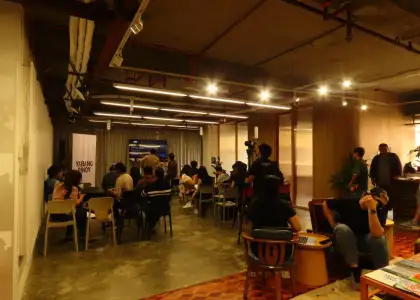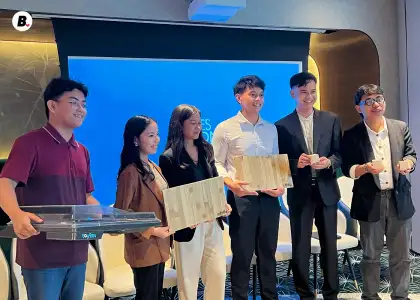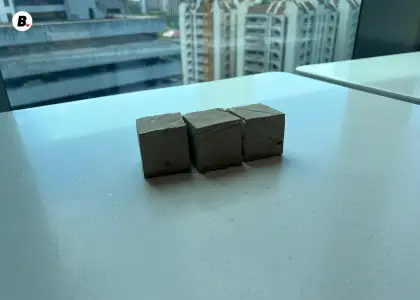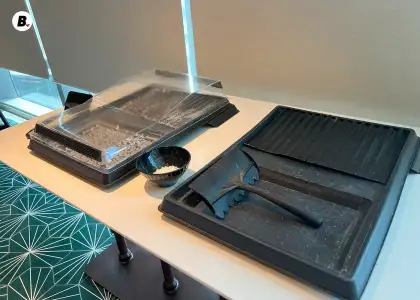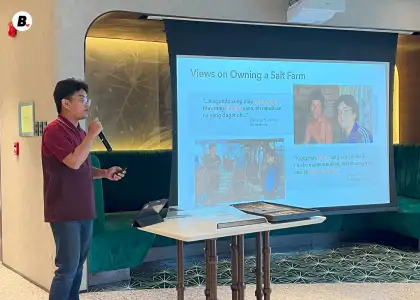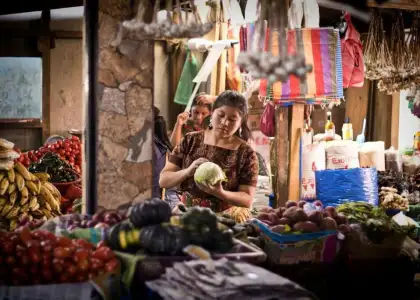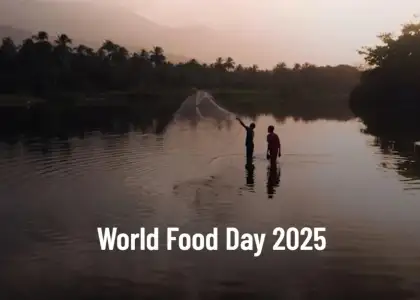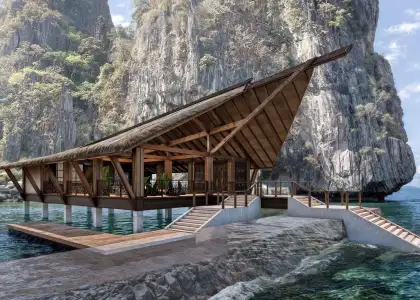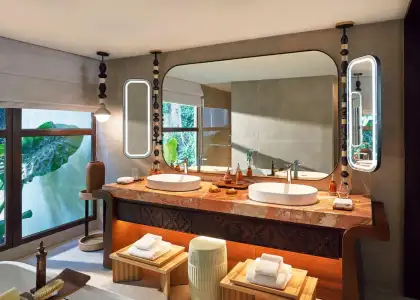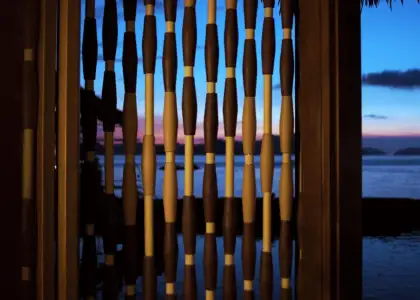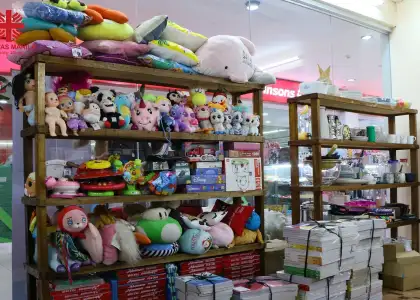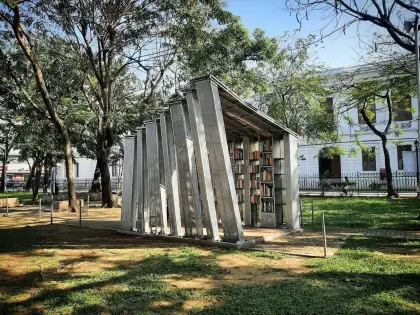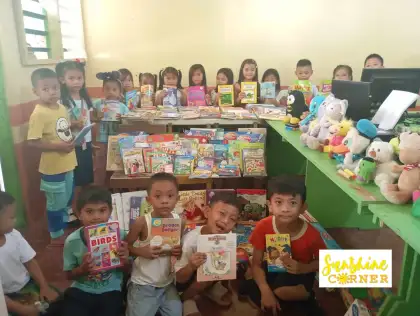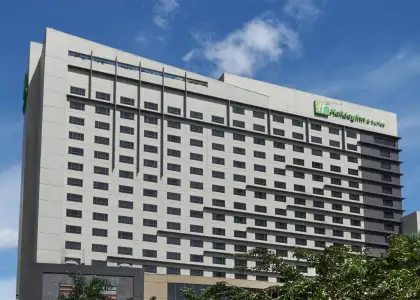Philippines Pushes for Multi-Sectoral Initiative to Protect Mangroves
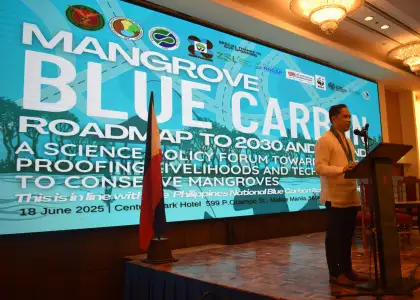
The Philippines, an archipelago with over 7,641 islands, is located at the heart of the Pacific typhoon belt, where it faces some of the most extreme climate challenges in the world, including rising sea levels, storm surges, and destructive typhoons throughout the year. This poses a huge problem, considering half the country’s population lives in coastal cities and municipalities, their livelihoods relying heavily on the bounty provided by the sea.
Amid this backdrop, mangroves prove to be a saving grace as these natural coastal defenders play a critical role in shielding shorelines, preserving biodiversity, and supporting the livelihoods of millions. And recognizing their importance is the Zoological Society of London (ZSL) Philippines, which launched the National Blue Carbon Action Partnership (NBCAP) earlier this year. Led by the Department of Environment and Natural Resources (DENR), this initiative aims to strengthen the protection and restoration of blue carbon ecosystems in the Philippines, ensuring their sustainability for climate resilience, biodiversity conservation, and community development.
“The restoration of our blue carbon ecosystems is essential to the nation’s environmental and economic future. They serve as natural defenses, sources of food and livelihood, and carbon sinks where carbon can be absorbed and stored,” said Edwina Garchitorena, Country Director of ZSL Philippines.
In a step towards strengthening this movement, the Forestry Development Center (FDC) of the University of the Philippines Los Baños, in partnership with the Department of Science and Technology (DOST), spearheaded a multi-sectoral initiative to protect and rehabilitate the nation’s mangrove forests.
The Beat Manila got to attend the Mangrove Blue Carbon Roadmap to 2030 and Beyond Forum last June 18 at the Century Park Hotel Manila where it brought together leaders, scientists, and communities in a multi-sectoral effort to shape policies, technologies, and livelihoods that will fortify the country’s natural barriers while also advancing sustainable mangrove management and coastal development.
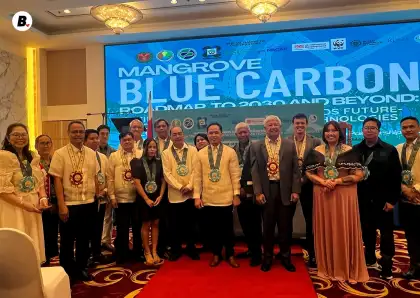
“It’s not a takeoff but a follow-through. If you remember, we just launched the NBCAP, and we want to really put substance on the roadmap,” said Dr. Dixon Gevaña, Director of UPLB FDC. “2030 is just very near, and we have a lot of global targets, and we are signatories to these targets. So, it’s critical to identify the major steps — the major ingredients to achieve the 2030 goal. We are setting an ambitious goal, but it’s also very realistic. You can do a lot, but doing a lot will require the needed policies and actions.”
Central to the roadmap discussion was the push for policy and legislative priorities, including strong backing for the proposed Integrated Coastal Management (ICM) Act and the Coastal Greenbelt Bill, which both aim to institutionalize science-based and community-led approaches to managing the Philippines’ extensive coastlines. The forum also highlighted the need for coherent governance, cross-agency coordination, and inclusive mechanisms that empower local stakeholders as stewards of mangrove landscapes.
The Importance of Blue Carbon Ecosystems
The Philippines is among the countries most affected by mangrove loss in the ASEAN region, suffering a 10.5% decline between 1900 and 2010, which is second only to Myanmar’s 27.6% recorded between 2000 and 2014. According to Dr. Yasmin Tirol, Dean, College of Fisheries and Marine Science, Aklan State University, this loss goes beyond ecosystems; it directly threatens food security, livelihoods, and even cultural identity in coastal communities that depend on gleaned mangrove resources for daily sustenance. Without mangroves, many families lose access to what she described as “food you don’t have to buy if you have something to glean,” highlighting the urgent need to conserve and restore these forests.
Dr. Yasmin also showcased some of the livelihood opportunities mangrove forests provide that go beyond coastal protection. It is home to many species of fish and clams, and is a valuable resource in creating traditional drinks such as the Tungog, and cosmetic and medicinal products that improve health and overall well-being.
With over 60% of Filipinos living in low-lying areas that are vulnerable to climate risks, the Mangrove Blue Carbon Roadmap to 2030 forum emphasized the urgency of prioritizing mangroves in national adaptation and mitigation strategies, particularly by integrating blue carbon into the Philippines’ Nationally Determined Contributions (NDCs) under the Paris Agreement. Dr. Severino Salmo, Professor and University Scientist at UP Diliman, talked about how achieving these targets required a balanced approach — conserving mangroves for carbon permanence while restoring them for measurable additionality. This must be supported by standardized, site-specific data to strengthen carbon accounting and attract investment in blue carbon initiatives.

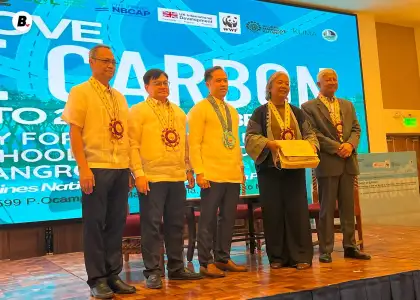
During the press conference, Roberto “Ka Dodoy” Ballon, Chairman of KGMC in Kabasalan, Zamboanga Sibugay, emphasized mangroves’ vitality in the country and captured what the roadmap ultimately seeks to protect.
“Kung aalisin mo kami sa aming kabuhayan, malayo kami sa dagat, sa ilog, sa mga mangrove — wala na kaming buhay. Ang panawagan namin: huwag kaming ilayo. Palakasin ang proteksyon — lalo na ang mangroves — dahil nandiyan ang aming kabuhayan, ang aming pamilya, at ang aming kinabukasan (If you were to take us away from the seas or rivers, we won’t have any livelihood. Our call: don’t take us away from it. Strengthen our protection — our mangroves — because it protects our livelihoods, our families, and our futures).”
In talks on the factors that contribute to the decline of mangroves, it was mentioned that urbanization aquaculture — meaning mangrove forests being converted into fishponds — are the top reasons. In fact, half of the Philippine mangroves have already been lost to it, which made us question: can the mangrove restoration initiative affect people’s livelihoods negatively? This was clarified by Dr. Severino Salmo II, Professor and University Scientist, UP Diliman, when he explained that they are advocating for the restoration of abandoned fish ponds, not the active ones.
“Fishponds are privately owned while mangroves are communal resources, which means it’s owned by the state. Once the mangroves are converted into ponds, it takes a lot of time to operate and over time — maximum of 25 years, some even as little as 10 years, its natural productivity decreases. If that’s the case, the fishponds are abandoned,” he explained.
“We are advocating for that restoration because that belongs to the state, so it belongs to the people. The people will have to benefit from the restoration. If we keep on delaying restoring the abandoned fish ponds, you're leaving the community vulnerable to typhoons, and you’re losing those biodiversity benefits. That’s an injustice.”
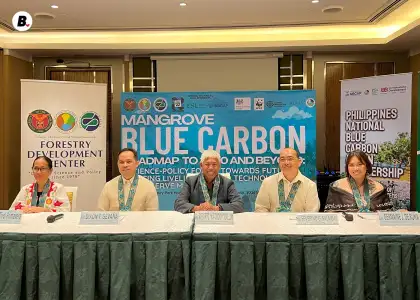
Another highlight of the forum is discovering financial and investment opportunities of Blue Carbon in the Philippines and Southeast Asia, which was facilitated by Dr. Gopalasamy Reuben Clements, Sustainable Finance Specialist from the Zoological Society of London, and Ma. Josella Pangilinan, Program Coordinator of Wetlands International.
Josella’s talk explored the different ways to fund Blue Carbon projects in the Philippines, as well as investment opportunities that can help fund and protect Blue Carbon restoration and conservation initiatives.
“The numbers are very clear. We are losing around two to five percent of our Philippine coastal ecosystem annually. That translates to US$1.2 billion annual economic losses from degraded mangroves. This affects about 40% of the Filipinos who depend on coastal resources for their livelihoods.”
Josella then stated key financing options to help fund conservation and restoration initiatives, which included Blue bonds and Blue loans, Blue Carbon credits, and the International Climate Fund. On the other hand, Dr. Gopalasamy explored blue finance opportunities in Southeast Asia, such as Impact bonds, Carbon credits, and Biodiversity credits.
The Takeaway
2030 is not far, and it’s important to know how much mangroves contribute to our country’s and people’s protection and livelihoods. Listening to the speakers has equipped us with the knowledge on how mangroves fit into the bigger picture and why they need our urgent attention.
The event culminated with commitments to refine the national blue carbon roadmap, align sectoral efforts, and build momentum for the passage of enabling legislation. Stakeholders also pledged to support the development of a long-term monitoring and financing mechanism for mangrove conservation, which will be supported by science and local participation.
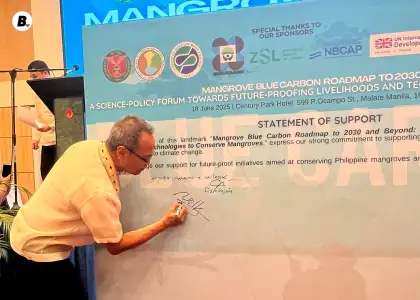
As climate threats increase, mangrove protection is a national priority that requires cross-sector collaboration, community empowerment, and inclusive support to integrate blue carbon into policy and protect lives, livelihoods, and long-term resilience.
To learn more about these initiatives, click here or follow UP Los Baños’ Forestry Development Center on Facebook.
Get the latest curated content with The Beat Asia's newsletters. Sign up now for a weekly dose of the best stories, events, and deals delivered straight to your inbox. Don't miss out! Click here to subscribe.


















